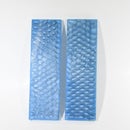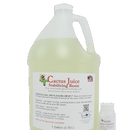Introduction: Making a Simple Kydex Knife Sheath
Whaddup denizens of the internet, its ya boy guz- wait, wrong intro. Hows it going lads and lasses, in a previous instructable i walked you through how to make a simple cord-wrapped tactical knife. This time around, im going to show you how to make a basic sheath from a material called kydex, so you actually have a place to store your stabby new toy. That way, you can stop walking around with it in your hands constantly, you creep
Whats kydex you ask? Kydex is a thermoforming plastic made for use in gun holsters and knife sheaths. "Thermowhatsit? What the devil is that?!" i can hear a few of you screaming at your monitor. First off, stop screaming, youre freaking out the neighbors. Second off, thermoforming means you get it hot, it gets flexible and you can bend it to shape. Kinda like spagetti, but, you know, not.
So, why kydex? Because i said so. Seriously though, kydex is a great choice if youve never made a sheath before because of how easy it is to work with. You dont need a lot in the way of specialized tools, odds are you already have most of what you need laying around the house. Even if you dont have the tools, the other benefit of kydex is just how cheap it is to work with. The material itself is available for $3-4 a sheet, the fasterners are about the same for a bag of 100, you get the point. Dont let any of that fool you though, just because its cheap doesnt mean its crap. A good kydex sheath will be every bit as functional as a hand-tooled leather sheath, if not as good looking.
Ready? Lets go!
Step 1: Step 1 - Gathering Materials
So, what do we need for this, youre probably asking. Whelp, its a short list:
1. Kydex. Duh. You can find this stuff on amazon, ebay, knifemaking supply places, even tandy leather has it. You want the .080 thick stuff
2. 8-8 Eyelets. These are what hold the 2 parts of the sheath together. You could substitute rivets if you like, i like eyelets because they allow easy attachment of belt clips, lanyards, etc. Here again, amazon, ebay, etc. Make sure to get the 8-8 eyelets, as those are just the right length for a double layer of .080 kydex
3. Eyelet Setter. I got mine from Tandy Leather. One of the few specialized tools you need, but well worth the $10. I really recommend this one in particular, it works better than the others ive tried
4. Hammer. Im not going to tell you where to buy a hammer, you know where to find one
5. Kydex Press. Yes, this is necessary. You can buy the presses pre-assembled for a little under $100, or you can do what i did, get some heat-resistant foam and some plywood and make your own. Either way, you need some way to squish the kydex to shape
6. Heat Source. You need a way to heat the kydex to make it floppy. Im using a toaster oven, but a regular over or a heat gun would work as well
7. Hole-making device. Im using a drill press because, hey, burn em if youve got em. A hand drill would work just as well. Youll also need a 1/4 drill bit, preferably a brad point bit
8. Cutting tool (not pictured). You need something to cut the kydex. Im using a bandsaw, but for those of us who are power-tool challenged, a coping saw would work just as well. A hacksaw could do in a pinch.
9. Sharpie, preferably red. Red shows up best on black kydex
Got all that? Good, lets move on!
Step 2: Step 2 - Cut to Size
Im working off a smaller scrap of kydex here, but odds are, youll be starting with a full sheet, so the first step is to cut what you need. Now, im making what im going to call a 'hamburger' style sheath, theres a layer of kydex (bun), the knife (patty), then another layer of kydex (other bun). Contrast this to a 'taco" style sheath, which is made like a taco.
Enough food, back to business. Lay your knife onto your kydex, then trace a line around the profile, leaving about 1.25" between the line and the knife. This may seem overly generous, but the materials cheap and while you can always cut some off later, you cant add it. Now, use your cutting implement of choice and cut along that line you traced. In my case, the piece of kydex i was working off was small enough all i really needed to do was cut it in half at the bandsaw.
Now, you should have one bun for the proverbial hamburger. Go cut another just like it, and meet me at the next step
Step 3: Step 3 - Forming the Kydex
Now for the fun part, making the flat sheet of kydex fit your knife. First things first, do a dry run at the press, just to make sure everything fits properly. The order is -
1. Bottom press board
2. Foam Layer
3. Layer of Kydex
4. Knife
5. Kydex layer numero dos
6. More foam
7. Top press board
Make sure you can center the knife in the piece of kydex, with a generous border around it as shown in the pictures. Dont skip this part, its a lot easier to find out a piece is undersize now, rather than when its hot and floppy. Assuming all went well in the dry run, now for the wet run, which involves no water. Probably shouldve used a better metaphor... Anyway, move over to your toaster oven and set it to 250 degrees, then pop both kydex pieces in for about 10 minutes. After 10 minutes, check and see if its nice and floppy. It should flex easy, under its own weight. If it doesnt, increase the heat to 275, wait 10 more minutes and try again. You can go up to about 300 degrees, but best to start low. Anyway, now that the kydex is nice and malleable, move it to the press the exact same way as before. Remember, the shiny side of the kydex should be touching the knife, the rough side should be facing outward. Move quick, if you let the kydex cool too much it wont form like it should. Get the stack assembled and get some pressure on it. Now walk away and let it cool.
I should mention here, if you dont have my patented Heat-Proof Hands, wear some thin cotton gloves to protect yourself.
After 10ish or so minutes, the kydex should be cool and holding its shape, which should be the shape of the knife with a fair degree of detail. Consult the pictures for more detail on how it should look. Yours doesnt look that way, did the kydex not properly take the shape of the knife? No issues, heat it back up and try again, kydex is awesome like that!
Assuming both halfs of your sheath look good, lets get them stuck together!
Step 4: Step 4 - Holes and Eyelets
Alright, youve got 2 halves now, time to stick em together to make a whole! First things first, you need to decide where to put the holes (teehee, puns). The important thing to note here is that where you put the 2 fasteners closest to the throat, where you insert the knife, changes how well the sheath will retain said knife. Put the eyelets too far down the blade and the knife falls right out, put them too far up the handle and youll never get the knife out. How do you know where to put the eyelets? Experiment. Use a couple squeezy clamps to hold the 2 halves together, then move them to different spots on the sheath until you find the ideal point for blade retention. Once youve found a good spot, mark it.
Now you have the location for 2 holes in the right general place. Now you just need to get them in exactly the right place. Scribe a line around the outline of the knife, with about a 1/4" offset, like the picture. Now, mark out the spots for the rest of the eyelets. Now, with the exception of the first 2 by the throat, the eyelet position really doesnt matter, just make it look good. I chose to go with about a 1" spacing along that guideline.
Now that you have the locations marked, time to make some holes. I like doing this one half at a time, just to make sure everything lines up properly. Start with the half you did the layout on, and make the holes using a 1/4" brad point drill bit. Bit selection is important, the brad point bit will make a nice, clean hole in the kydex, a twist drill tends to tear it up.
Now that you have 1 side drilled, use some squeezy clamps to clamp the 2 halves together with the knife inserted, to keep everything lined up. Now, drill 1 hole, but just one. Insert an eyelet in that hole, secure it (the eyelet setting tool should com with instructions, if not Tandy has an excellent video) then drill a second hole. Put an eyelet in the second hole, then proceed to drill the rest. Doing the first 2 holes like this helps to keep everything lined up like it should be. If you were to drill all the holes at once, you run the risk of mis-drilling a hole and messing everything up
Once youve got that all attached, meet me at the saw!
Step 5: Step 5 - Trim to Size
Alrighty, now that everything's stuck together, time to bring the sheath down to size. At this point, yours should still be considerably oversized, like mine is. The first step is to draw out a line to cut to. I made mine to follow the profile of the knife, pretty easy to do. Make sure you give the eyelets some room to the edge, 1/8 to 1/4 should do.
Now that youve got that line laid out, cut to it. I used my bandsaw to make short work of it, here again a coping saw would do. Now, technically, if you work the saw right, this is your last step. Personally, i wanted a smoother look, so i turned to my 2x72 belt grinder and refined the shape a little. Rounded over the corners, beveled the edges, got rid of anything that could snag, made sure the knife slid securely. At the very least i recommend using some sandpaper to smooth the rough edges, they can be a little rough from the saw cut.
As a completely optional step, use a felt wheel or loose cotton wheel with some white compound to give a little polish to the edges. Be careful if you do, too much force on the buff will melt the kydex
Step 6: Step 6 - There Is No Step 6
Seriously, youre done. Youve now got a very functional knife sheath, ready for whatever you can throw at it. Total investment? Maybe $30 in startup costs, $4 a sheath after that if even, and less than an hour of time . Not too shabby, eh?





